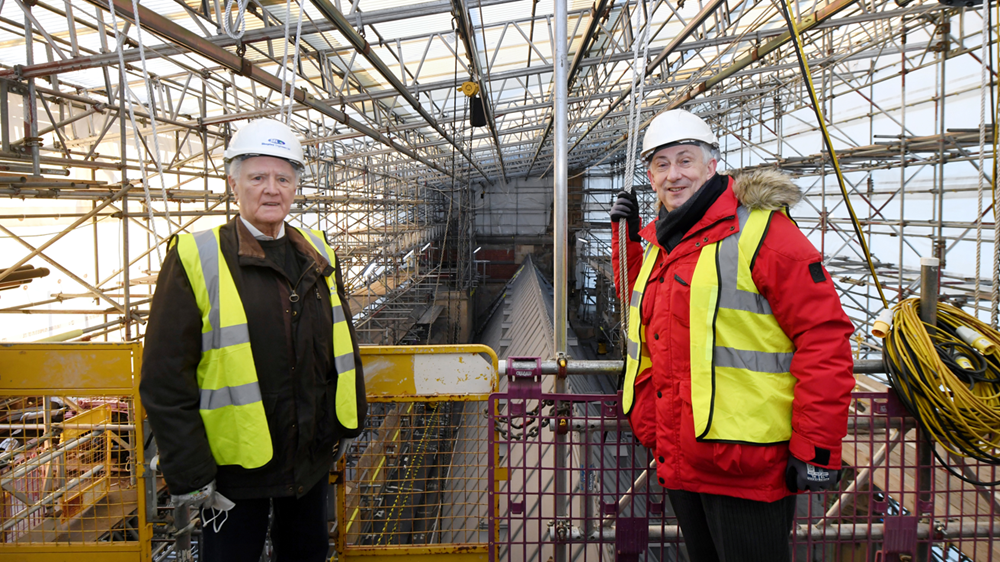Commons and Lords Speakers celebrate conclusion of major Parliament restoration project
18 January 2022
A major conservation project in Parliament has concluded after almost ten years, as the final piece of metalwork - a newly-restored dormer window - was returned to its Victorian cast iron roof. It was overseen by the Speaker of the House of Commons, Sir Lindsay Hoyle, and the Lord Speaker, Lord McFall of Alcluith, and brings to a close restoration work on what is thought to be the largest expanse of cast iron roofs in Europe.
The 26 individual cast iron-tiled roofs refurbished under this programme cover some of the most historic parts of the Palace of Westminster. They were installed in the mid-1800s, using cutting-edge technology at the time. But generations of wear-and-tear meant that the roofs were no longer watertight, causing damage to the fabric of the building, and were in urgent need of repair.
So for the first time since they were installed under the supervision of Charles Barry, in the mid-nineteenth century, tens of thousands of individual components were removed. All the components, including individual cast iron roof tiles weighing around 65kg each, gutter sections, dormer windows and other decorative features were transported to Shepley Engineers’ workshop in Chapeltown, Sheffield.
There they were stripped back to base metal and assessed. Where elements could be repaired and returned to the roof they were brought back. New components were cast to the original design, if repairs were not feasible.
As the project progressed and the skills of the engineers developed, more of the original metalwork could be restored, rather than being recast. By the end of the project up to 90% of original components were being restored and reinstalled.
Mary Gallagher, the project leader for UK Parliament said: “Working on this project has been like completing the world’s largest 3D jigsaw puzzle.
“We have to carefully remove each individual component of the roof, tag it, take it off site and then bring back the original piece, or its newly-made replacement. Each section goes back in exactly the same place it came from – or else it might not fit!
“We’ve also used the scaffolding to carry out other maintenance work, including removing redundant machinery from the roof voids and carry out essential stonework repairs. The roof was really well constructed at the time, and this restoration is unprecedented. With proper maintenance, the cast iron roofs of Westminster won’t see work on this scale again until the 22nd century.”
The majority of scaffolding, which has covered much of the West Front of the Palace, facing Westminster Abbey, will be removed in the coming months. However, some of it will remain in place to allow access for further stone repairs.
Sir Lindsay Hoyle, Speaker of the House of Commons said: “It’s been fantastic to see up close the work that has been going on above our heads, while we’ve all been working away here in Parliament. You really appreciate the skill that went into constructing this wonderful Victorian building when you see it from a different perspective.
“It’s thanks to the hard work of skilled engineers in Westminster and elsewhere that this newly-restored roof will help secure the Palace’s future for generations to come.”
Lord McFall of Alcluith, the Lord Speaker said: “The skills of the engineers and experts that have made this cast iron roof project such a success are second to none, and I thank them for their efforts.
“I’m pleased that throughout the project that they have been able to save and maintain so much of the original fabric of the roof. People all over the world admire the Palace of Westminster and this newly restored roof is now its crowning feature.”
